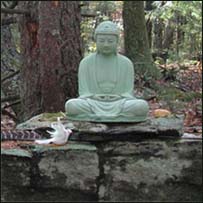|
|
 |
Please support Dharma Seed with a 2025 year-end gift.
Your donations allow us to offer these teachings online to all.

|

|

|
The greatest gift is the
gift of the teachings
|
|

|
| |
|
Retreat Dharma Talks
|
|
Three-Month Retreat - Part 1

|
| This six-week partial of the three-month course is a special time for practice. Because of its extended length and ongoing guidance, it is an opportunity for students to deepen the powers of concentration, wisdom and compassion. Based on the meditation instructions of Mahasi Sayadaw and supplemented by a range of skillful means, this silent retreat will encourage a balanced attitude of relaxation and alertness, and the continuity of practice based on the Buddha’s Four Foundations of Mindfulness. |
|
2015-09-12 (43 days)
Insight Meditation Society - Retreat Center
|
|
| |
|
2015-09-28
Satipatthana Series - The first foundation of mindfulness: the body
59:36
|
|
Sally Armstrong
|
|
|
In the Satipatthana sutta on the foundations of mindfulness, the first area of practice is the body. The Buddha gives us many different practices and ways to investigate the body. This talk explores these practices, beginning with the breath, but going on to other practices that we don't often teach, such as the four elements, the 32 parts of the body, and corpse contemplations. Each of these practices can be a powerful doorway to wise seeing and freedom. This talk is the first of a series of four on each foundation of mindfulness.
|
|
2015-10-05
The Second Foundation of Mindfulness: Feeling Tone
57:36
|
|
Sally Armstrong
|
|
|
Vedana, or the feeling tone of pleasant, unpleasant or neither-pleasant-nor-unpleasant that arises with each contact, was considered important enough by the Buddha to be a foundation of mindfulness, one of the five aggregates, and central to the teaching on dependent origination. It is also at the heart of the Dart Sutta in the Samyutta Nikaya, where the Buddha talks about the two common responses to suffering: to bemoan and lament the fact that suffering is happening, but often to try to avoid the unpleasant by chasing after the pleasant. This talk looks at all of these different teachings to help us understand the importance of bringing mindfulness to vedana in our practice and in our lives.
|
|
|
|
|